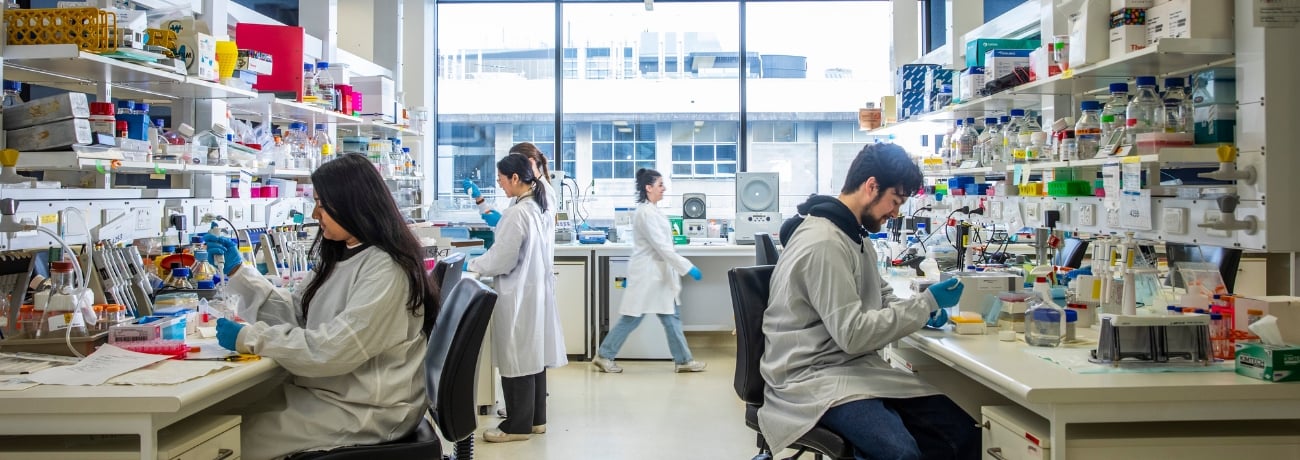A new chemogenetic method that enables functional neural circuit analysis
Neurons within the brain are intricately organised and interconnected to form neural circuits that work collectively and specifically to control behaviour and physiology. Understanding how these neuronal circuits function in the mammalian brain and how they are dysregulated in disease is a major goal in neuroscience research.
Two techniques, chemogenetics and optogenetics, have revolutionised neuroscience as they have allowed precise exploration of the involvement of specific neurons in modulating particular behaviours and physiology by exogenous drug or light activation, respectively. However, both optogenetics and chemogenetics lack the ability to define the inputs to the neuron which drives the behavior and this circuit information is essential for understanding behavior and its dysregulation in disease. Our group therefore developed a new chemogenetic tool, allatostatin-3 (Ast-3), to understand neural circuits.
Aim
- Expand on the chemogenetic methodology to make the Ast-3 construct cell specific
- Develop novel excitatory version of this newly developed system
In collaborative studies with Professor Andrew Allen in the Department of Physiology and Dr Stuart McDougall at The Florey, we have developed a new chemogenetic tool to understand neural circuits. Our research, which was recently published in Cell Reports (1), utilises an adaptation of a chemogenetic system using the insect peptide allatostatin-3 (Ast-3). Both Ast-3 and its specific allatostatin receptor (AstR) are inert in the mammalian brain. Expression of AstR in specific neurons, and then delivery of exogenous Ast-3 peptide has been used in mammals to study neuronal function.
Our development was to exploit the fact that the Ast-3 peptide can be genetically encoded. We developed a recombinant viral vector that enables expression of bioactive Ast-3, its trafficking to the synapse and release in response to neural activity to inhibit neurons expressing the AstR. We have therefore developed an enhanced, highly specific chemogenetic approach whereby genetic expression of the activating ligand enables definition of the inputs to neurons expressing the AstR and hence understanding of the circuits controlling the behaviours associated with the specific neurons.
Current studies, available for student projects, are focused on expanding this chemogenetic methodology to make the Ast-3 construct cell-specific, based upon neurochemical phenotype or its axonal projection and Ast-3 expression inducible using a tetracycline transactivator approach. Additionally, we will develop a novel excitatory version of this novel system. Projects will involve molecular cloning of the viral constructs and extensive validation of their functionality in cell systems in the Bathgate lab; detailed synaptic physiology to examine transgenic peptide release with whole cell neural recording in the McDougall lab; and in vivo validation both anatomically and physiologically using well-characterised neural systems in Prof Andrew Allen’s laboratory. Honours, Masters and PhD projects are available
Research team
Supervisor
Member
Research group
Collaborators
- Professor Andrew Allen – Department of Physiology, University of Melbourne
Apply to take part in this project
Student applications
Students who are applying to study at The Florey can register their interest in this project. Refer to our step-by-step guide to help you with your application.
Contact us
If you’re interested in learning more about this project please contact our team.
